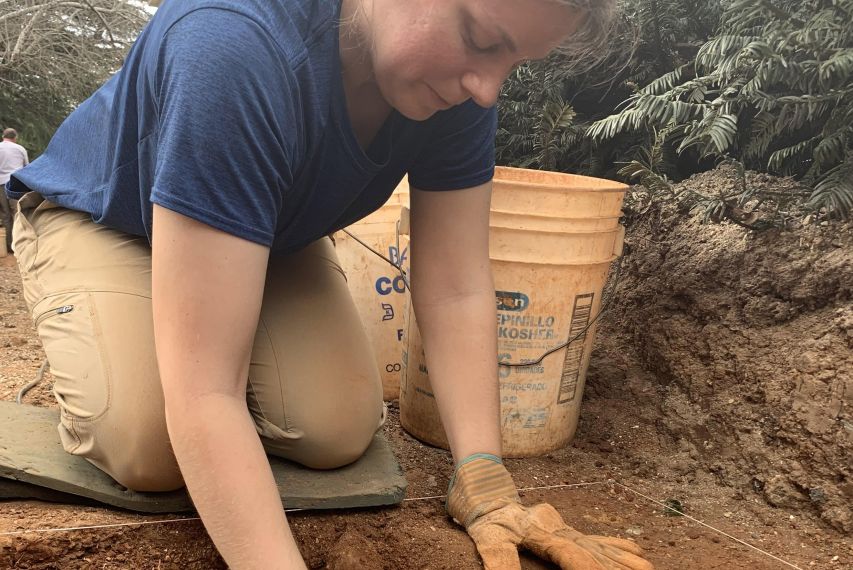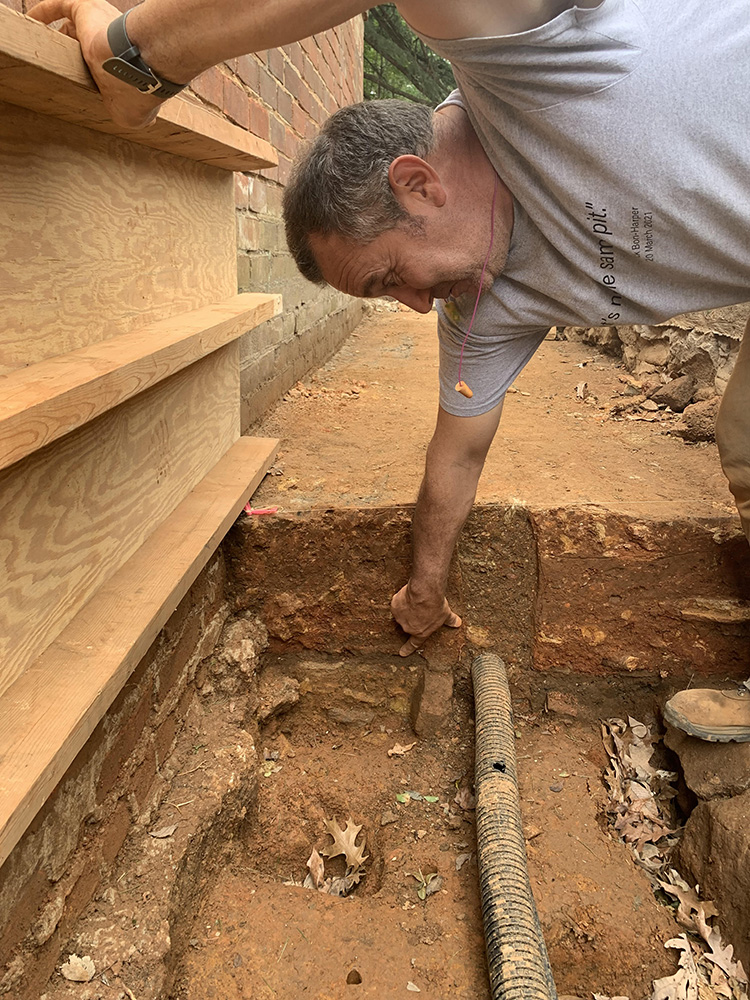“We put in two excavation units, Unit 1 at the southern end of the path and Unit 2 at the northern end,” said Nick Bon-Harper, archaeologist with the group. They started with Unit 1 at first. As they excavated the top 1-foot of soil that was fill used to level the path, they discovered an area that was used as a trash deposit space. “As archaeologists we love finding trash because it gives us such a good idea of what people's daily lives were like,” said Susan Palazzo who has been working on the site as well. They found broken ceramic table wares, a spoon, a tiny bone die, bird and mammal bones, bullet casings, and laboratory glass.
But it is Unit 2 that which has the experts wondering. They found a section of north-south brick wall that was standing from the 1930s and an early brick path also running north-south. This path would probably have been in use before additions were made to Hotel A.
“The question remains not when was it added, but what was it for?” asked Bon-Harper adding that they are studying the stone walls and walls of Hotel A as well. “Although we haven't yet come to a conclusion, we are hopefully closer to answering some of those questions.”
The archeologists have been following the renovation behind the west gardens for some time with interest as “pre-1950 gardens as living and working spaces for free and enslaved African Americans at the university.” The gardens once contained many outbuildings such as kitchens, washrooms, smokehouses, privies, and living quarters, and several of these structures remain beneath the soil. “These findings give us an idea of what people's daily lives were like,” said Palazzo.
Once they finish with Unit 2, they will monitor the grading for the new brick surfacing and looking for new signs to UVA's past.





